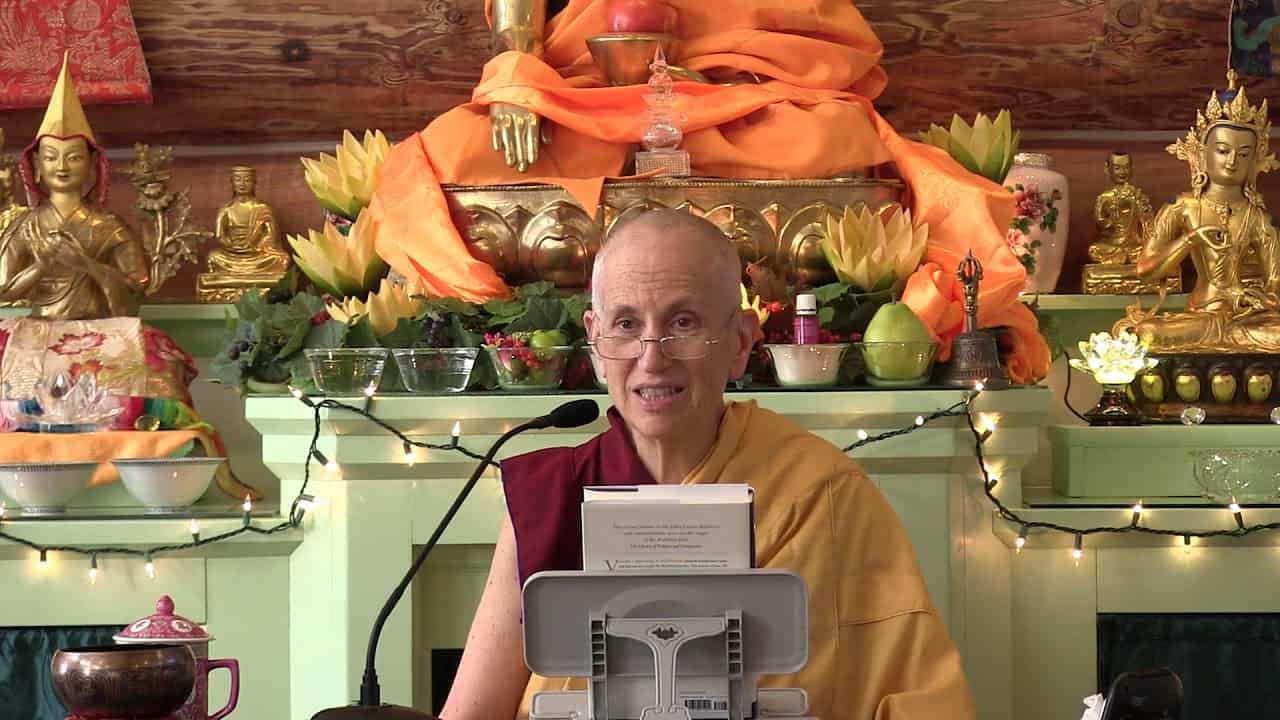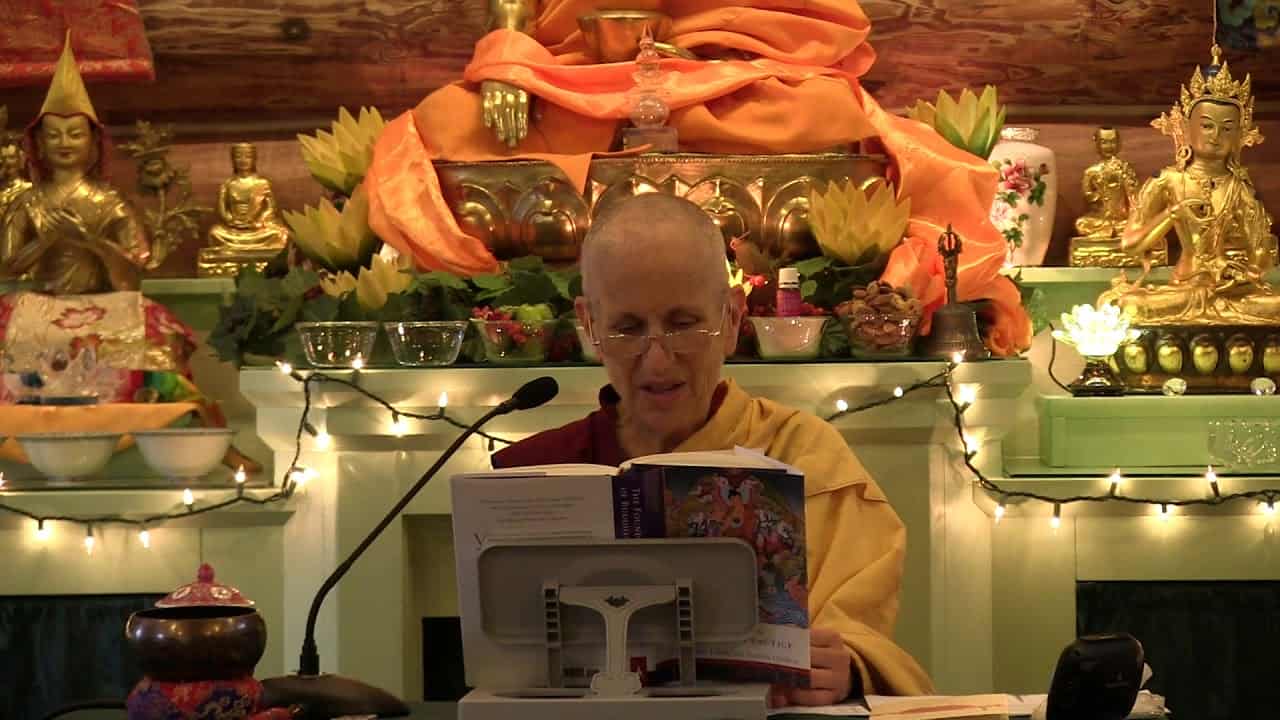The body and mind
12 The Foundation of Buddhist Practice
Part of a series of teachings given during a retreat based on the book The Foundation of Buddhist Practice given at Sravasti Abbey.
- Twelve sources and eighteen constituents
- Consciousness: mind and mental factors
- Five omnipresent mental factors
The Foundation of Buddhist Practice 12: The body and mind (download)
Contemplation points
- In your own experience, identify each of the twelve sources. Observe the relationship between the internal source, the external source, and consciousness arisen from them for each sense.
- Of the six senses, which ones prompt strong attachment in you? Which are the source of the greatest anger or aversion?
- Identify the eighteen constituents, especially the ones that compose you as a person.
- What is the relationship between you – the person – and the constituents that compose you? Are you one and the same as any of these constituents? Are you completely separate from them? Do you depend on them?
- When studying the Twelve Links of Dependent Arising, crossing from feeling to craving is an important time to observe. Our reaction to pleasant, unpleasant and neutral feelings run our lives. Examine: Think of a time when a strong emotion arose. Look at the feeling in your mind before the emotion. How aware are you in your own experience of the feeling when it is happening and how, out of that feeling, comes attachment or aversion? Do you even notice the feeling or only the external object? What karma do you create when you don’t have an awareness of this process? Really spend some time with this.
- When we understand what really leads to happiness and suffering, it changes how we look at the world and what we think, say, and do. Consider this in light of the previous point. What would your experience of the world be like if you had awareness of this mental process to the point that you increasingly were taming and transforming your own mind, rather than always reacting to the outside world? How might this new view be beneficial to yourself and others?
- Consider the two examples in the text illustrating how the primary consciousness and its mental factors are different and yet are of the same nature. Make some examples of your own.
- What are the five omnipresent mental factors? Describe each and make examples of them from your own experience.
Venerable Thubten Chodron
Venerable Chodron emphasizes the practical application of Buddha’s teachings in our daily lives and is especially skilled at explaining them in ways easily understood and practiced by Westerners. She is well known for her warm, humorous, and lucid teachings. She was ordained as a Buddhist nun in 1977 by Kyabje Ling Rinpoche in Dharamsala, India, and in 1986 she received bhikshuni (full) ordination in Taiwan. Read her full bio.


